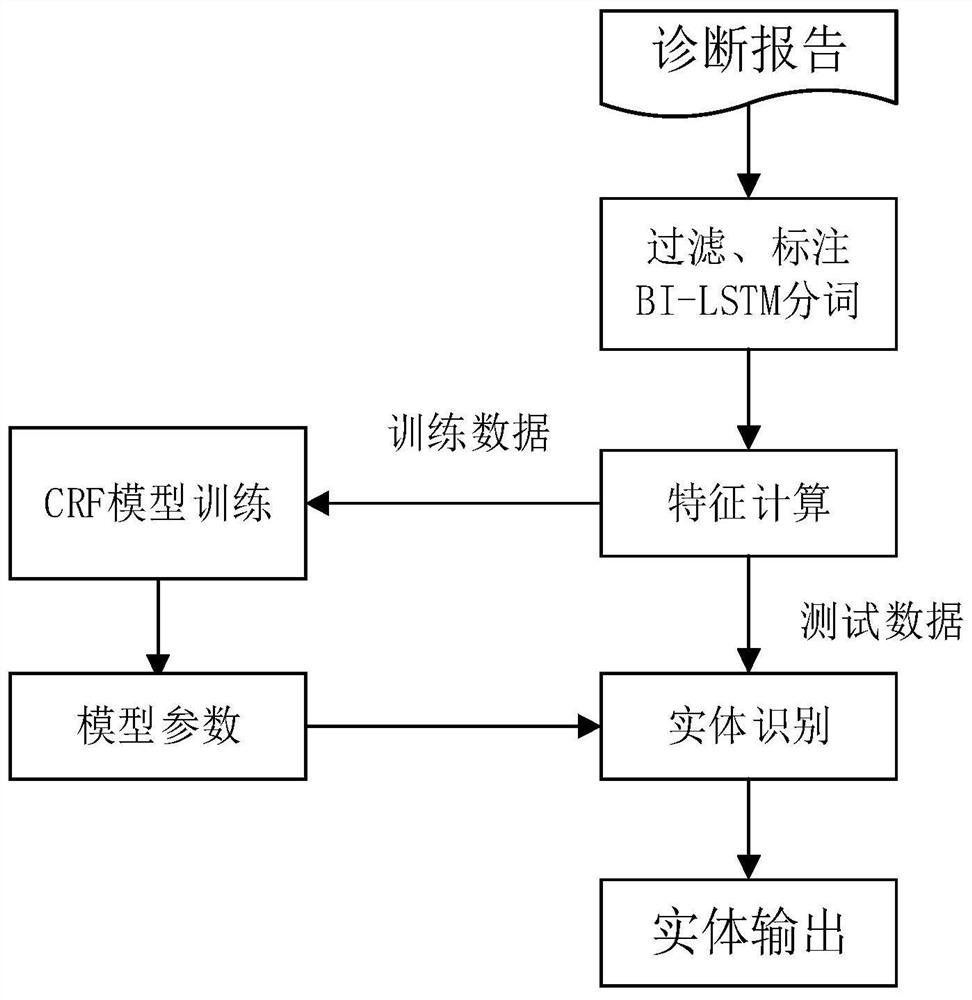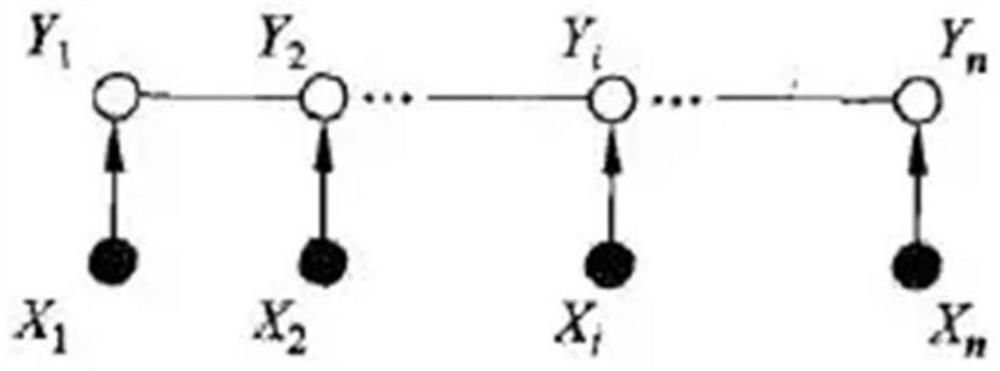Imaging diagnosis report named entity identification method based on multi-feature fusion
A named entity recognition and multi-feature fusion technology, applied in medical reports, instruments, biological neural network models, etc., can solve problems such as manual intervention
- Summary
- Abstract
- Description
- Claims
- Application Information
AI Technical Summary
Problems solved by technology
Method used
Image
Examples
Embodiment 1
[0038] Embodiment 1: as Figure 1-4 As shown, the named entity recognition method for image diagnosis report based on multi-feature fusion, the specific steps of the method are as follows:
[0039] Step1. First, copy the chest X-ray image report from the hospital information management system as the experimental corpus, and preprocess the corpus;
[0040] Step2. Then the preprocessed diagnostic report text data is input into the BI-LSTM network, and the optimal word segmentation result is output;
[0041] Step3. Obtain the feature vector of the optimal word segmentation result, and then send the feature vector to the CRF model to perform named entity recognition on the diagnosis report text, and train to obtain the image diagnosis report named entity recognition model based on multi-feature fusion; after obtaining the optimal acne When the feature vector of the result is obtained, the feature selection can be performed first, and then the feature calculation can be performed ...
PUM
 Login to View More
Login to View More Abstract
Description
Claims
Application Information
 Login to View More
Login to View More - R&D
- Intellectual Property
- Life Sciences
- Materials
- Tech Scout
- Unparalleled Data Quality
- Higher Quality Content
- 60% Fewer Hallucinations
Browse by: Latest US Patents, China's latest patents, Technical Efficacy Thesaurus, Application Domain, Technology Topic, Popular Technical Reports.
© 2025 PatSnap. All rights reserved.Legal|Privacy policy|Modern Slavery Act Transparency Statement|Sitemap|About US| Contact US: help@patsnap.com



